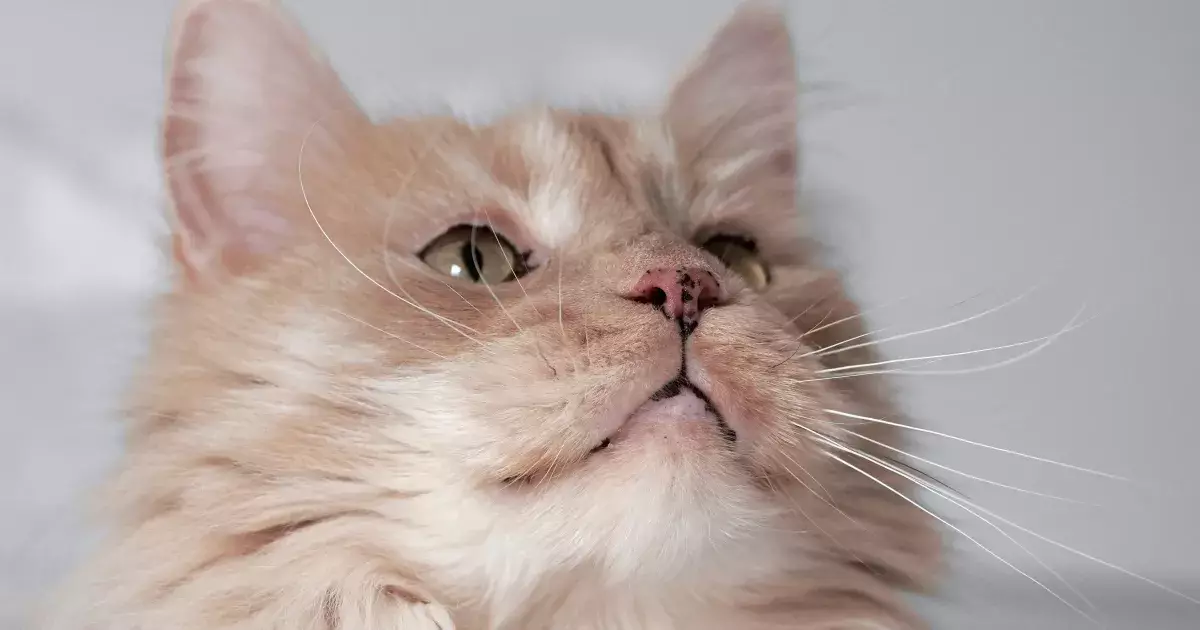Cats are often cherished companions, bringing joy and comfort into our lives. However, like all animals, they can experience various health conditions that may cause concern for their owners. One such condition is lentigo, characterized by small, flat, brownish spots on the skin, primarily on the lips, nose, and eyelids. This article explores the nature of lentigo in cats, examining its symptoms, possible causes, methods of diagnosis, and appropriate owner responses.
Lentigo manifests as small, pigmented spots resembling freckles commonly found in humans. These flattened lesions can vary in shape and size, ranging from tiny pinpoints to larger millimetric areas. While they predominantly surface around the facial features of cats, such as the lips and nose, they can occasionally be observed on other regions like the ears, gums, and even the abdomen.
What sets lentigo apart from other skin ailments is its painless and non-irritating nature. Cats typically show no signs of distress from these spots, which makes lentigo a largely cosmetic issue. However, responsible pet owners should vigilantly monitor any changes—such as an increase in the number or size of spots or alterations in texture or color. Any such changes could suggest the advancement of a more severe condition, which may warrant immediate veterinary intervention.
The precise origins of lentigo in cats remain inadequately understood, fueling speculation among veterinarians and cat enthusiasts alike. Research suggests a genetic component to the condition, as it appears more frequently in particular colors and coat types. Cats with lighter fur, including orange, ginger, calico, and tortoiseshell breeds, often exhibit a higher frequency of lentigo. This may be due to the visibility of pigmentation against their skin, leading to easier identification of the spots.
Importantly, despite the association of lentigo with sun-induced freckles in humans, this dermatological condition in cats is not a result of UV exposure. Some experts postulate that ginger cats, whose genetic compositions may be somewhat volatile, could undergo mutations that enhance melanin production, thus leading to the appearance of more prominent spots. Melanin, generated by melanocyte cells, determines the pigmentation present in skin and fur.
If lentigo is suspected, a trip to the veterinarian is essential. A thorough inspection of the affected skin is typically the first step in diagnosis. Vets may employ dermatoscopes, specialized tools that magnify skin lesions for closer examination. During this consultation, owners should be prepared to share their cat’s medical history, including any sun exposure and any recent changes in the appearance of the spots.
To ensure proper diagnosis and rule out other possible skin conditions—such as infections or tumors like melanoma—the veterinarian may recommend a biopsy. By analyzing a sample of the affected area under a microscope, the vet can definitively confirm whether the spots are indicative of benign lentigo or something more serious, underscoring the importance of diligence in pet healthcare.
Fortunately, lentigo in cats is usually harmless, and treatment is generally unnecessary. Owners are primarily encouraged to monitor the pigmentation for any suspicious changes rather than pursue cosmetic corrections. Saying this, there can be temptation to address the spots purely for aesthetic reasons; however, most veterinarians advise against such measures. Risking discomfort or complications from procedures intended to treat a benign condition can be unwarranted.
For owners eager to maintain their pets’ health, routine veterinary check-ups present an opportunity for early detection of any potential issues. This proactive approach allows for timely discussions about changes in the cat’s condition and facilitates effective management of overall feline health.
Lentigo in cats may appear alarming to those unfamiliar with the condition; however, it is important to contextualize it as a benign aspect of feline skin. For the most part, these spots present no danger and only require vigilance from owners. By fostering a deeper understanding of lentigo and ensuring consistent veterinary check-ups, cat owners can greatly contribute to their beloved pets’ wellbeing, turning their unique characteristics—spots and all—into a point of pride rather than concern.
